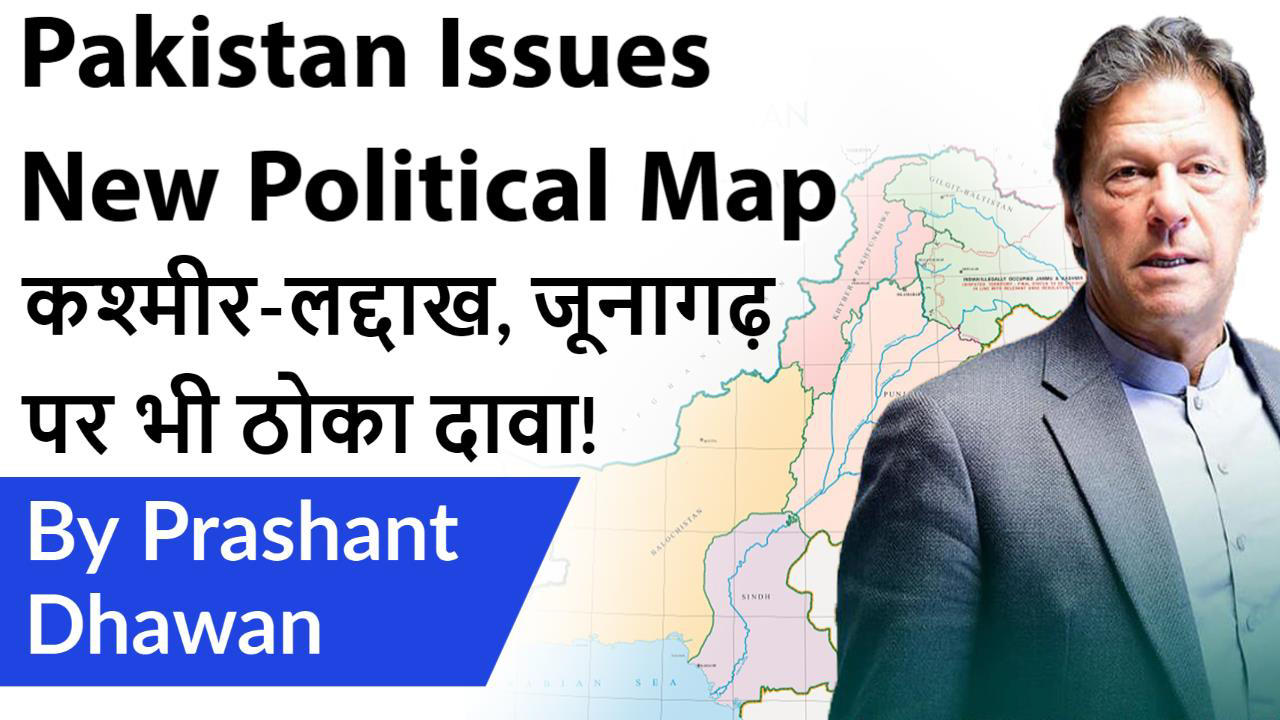Table of Contents


TIMING
- On the eve of the first anniversary of the abrogation of Article 370, a move that stripped the special status of the state of Jammu and Kashmir, Pakistan has released a new political map, making sovereign claims on the entire Jammu and Kashmir and the erstwhile princely state of Junagadh in Gujarat.
- On 5 August 2019, the Government of India revoked the special status, or limited autonomy, granted under Article 370 of the Indian Constitution to Jammu and Kashmir
PAKISTAN’S STATEMENT
- The statement also called for the use of IIOJKand not IOJK or IOK. It said that the term used to represent Jammu and Kashmir henceforth should be “Indian Illegally Occupied Jammu and Kashmir” as opposed to “Indian Occupied Kashmir”. It also added that ‘illegal action’ should be used in place of illegal annexation.
OLD AND NEW
- He said that the dotted line in the initial map that used to indicate a “disputed territory” has been done away with. He also said that Siachen has also been included in the new map and that it has always belonged to Pakistan.
- Qureshi claimed that the “Kashmiri leadership” has also endorsed the new map.
- “This map sends a message to India, it sends a message to the unarmed youth of Kashmir who martyr themselves for the cause, that Pakistan stands with them. This map represents our goal,” Qureshi said.
STATEMENTS FROM PAKISTAN
- “Our destination is Srinagar, our goal is to achieve and fulfil the dreams of our ancestors,” the foreign minister said, as he congratulated PM Khan.
- Foreign Minister Shah Mehmood Qureshi described the map as an “unprecedented step”.
- “For the first time in history, our government has openly presented its stance before the world,” he said.
JUNAGADH
JUNAGADH HISTORY
- Junagadh was also a princely state under the British rule. It was a Hindu majority state ruled by a Muslim ruler, Sir Muhammad MahabatKhan III Khanji, who wanted to join this state with Pakistan.
- Shah Nawaz Bhutto of Pakistan (a member of Bhutto family of Pakistan) was appointed the Dewan of Junagadh in 1947, who advised its merger with Pakistan.
JUNAGADH HISTORY
- Sardar Patel demanded that the matter of the state’s accession should be decided by its people instead of the ruler.
- Nehru laid out India’s position which was that India did not accept Junagarh’s accession to Pakistan.
POINT TO NOTE
- To force the Nawab of Junagarh to change his decision, India thrust a blockade upon the state.
- India later denied ever having blocked Junagarh’s supplies. The blockade compelled the state’s ruler to leave for Pakistan, who left the state’s administration to Sir Shahnawaz Bhutto.
PLEBISCITE
- In the plebiscite India polled 222,184 votes and Pakistan 130 out of a total population of 720,000 of Junagarh and its feudatories.
- Pakistan brought the case of Junagarh to the United Nations in January 1948. The UN Security Council commanded its commission on Kashmir to examine the conflict over Junagarh.
Latest Burning Issues | Free PDF



























 WhatsApp
WhatsApp